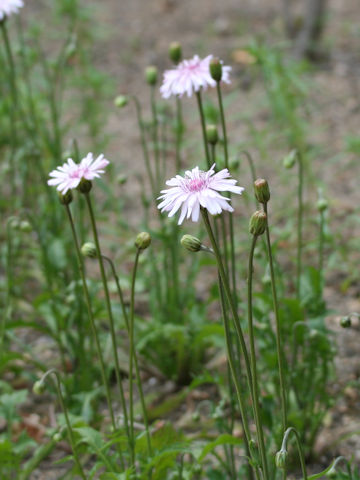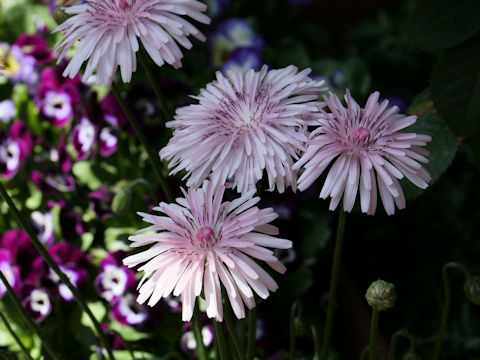 |














|

|
nCÝÌC^A¼ì©çoJ¼ª´YÅ·B³ÍRO`SOZ`ÉÈèÜ·BtÍ|âj`Ū¶µAÍHóÉ[ôµÜ·BS©çU²ëA×¢ÔsðLεÄW¢sNF̪Ôð穹ܷBʼÅu¹ñÚñ½ñÛÛiç{öpjvÆàÄÎêÜ·B
|

|
LNÈt^}^^||®ÌêNܽÍzNÅAw¼Í Crepis rubraBp¼Í Pink hawks-beard, Red hawks-beard B
|

|
The Pink hawks-beard (Crepis rubra) belongs to Asteraceae (the Aster family). It is an annual or a biennial herb that is native to the coastal areas of the Mediterranean Sea, and is distributed from the southern Italia Peninsula to the Balkan Peninsula. This herb can reach 30-40 cm in height. The leaves are oblanceolate and basal with pinnatipartite edges. The slender stakls are borne and bloom pale pink fower-heads from April to June.
|

|
{ãEP`Q] ·ì§å¬síÕuEJX^vÉÄA2006N0509úBeB
[RES] çt§æs¢ÊìÉÄA2008N0502úBeB
[TEº] {é§åäs{éìæÉÄA2021N0403úBeB
|








